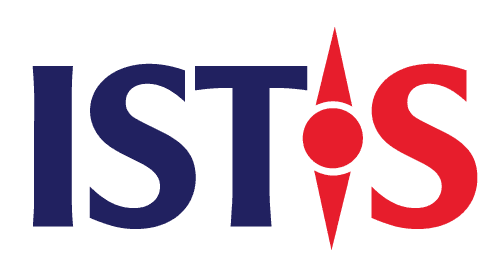In venture capital, success is often celebrated but rarely standardized. While headlines focus on billion-dollar exits or high-profile portfolio wins, the underlying performance of VC firms is far more complex — and difficult to measure objectively. This is why benchmarking plays a central role in how investors evaluate funds, allocate capital, and build long-term trust in the industry.
For Limited Partners (LPs), benchmarks provide a way to compare VC funds against each other, across regions, and over time. They offer clarity around what constitutes a strong return, how long capital is typically locked, and how risk-adjusted gains should be interpreted. In mature markets like the U.S. or Europe, where decades of fund performance data exists, benchmarking helps LPs make confident, repeatable investment decisions.
In emerging markets, however — including Vietnam — the situation is more nuanced. The venture capital landscape is relatively young, with many first- or second-time fund managers still building track records. As a result, global benchmarks may not reflect the local investment environment. Fund sizes are smaller, exits often take longer, and capital formation strategies are still evolving. Yet the pressure to meet global expectations — such as double-digit IRR (Internal Rate of Return, a measure of how quickly a fund grows capital annually) or 3x MOIC (Multiple on Invested Capital, meaning the fund returns three times what it originally raised) — still exists, sometimes without the infrastructure or maturity to support it.
This mismatch creates two challenges: one for LPs seeking clarity in unfamiliar terrain, and another for local fund managers trying to prove value without overpromising. In both cases, benchmarking must be approached with context.
Rather than copying global standards blindly, emerging VC ecosystems have the opportunity to define what performance means on their own terms — in ways that are aligned with ecosystem needs, fund maturity, and long-term resilience.
Global VC Benchmarks
Venture capital is unlike other asset classes: it involves high risk, long time horizons, and uncertain liquidity. That’s why the industry relies on a few key financial benchmarks to evaluate fund performance. These metrics, while standardized globally, require context — especially when applied in emerging markets.
The most widely used metric is IRR (Internal Rate of Return). It calculates the annualized percentage return on the capital invested in a fund, accounting for both timing and size of cash flows. A “double-digit IRR” (e.g. 20–30%) is often considered strong, especially if achieved over 8–10 years. However, in early-stage markets, exits may be delayed, making IRR look artificially low in the short term.
Next is MOIC (Multiple on Invested Capital), which measures how many times the fund returns its original capital. A 3x MOIC means a $10 million fund has returned $30 million in total. It’s a straightforward measure, but doesn’t reflect how long it took to reach that return.
Two additional metrics matter, especially to LPs:
- TVPI (Total Value to Paid-In): Combines realized returns (cash returned) and unrealized returns (current value of portfolio) divided by capital invested.
- DPI (Distributions to Paid-In): Only measures cash that has actually been returned to LPs — showing what’s “in hand,” not just on paper.
While these benchmarks are standard globally, they don’t always tell the full story in younger ecosystems. A fund may have a strong portfolio with promising startups, but without a liquidity event, IRR and DPI remain low. Conversely, a fund that exits early at modest gains may show good metrics, but not long-term impact.
That’s why benchmarking must be interpreted through the lens of stage, strategy, and market conditions — especially in regions still building exit pathways and capital depth.
Vietnam’s VC Landscape
Vietnam’s venture capital market has evolved rapidly, but it remains in an early stage compared to the global hubs where standard VC benchmarks were developed. Most local funds are managing their first or second fund, many with modest fund sizes (typically $10–30 million), and operating in an environment with limited exit options, especially via IPOs or major M&A.
This has important implications when applying traditional benchmarks like IRR or DPI. For example, a local fund with a portfolio of high-potential startups may still report low IRR after several years — not because of poor investment choices, but because exits haven’t happened yet. Similarly, DPI remains close to zero in funds that are “illiquid” by nature, even if unrealized returns are strong.
At the same time, smaller fund sizes mean that even successful exits may not produce the kind of MOIC or TVPI ratios seen in large global funds. A $2 million exit in Vietnam can be a major milestone for a startup — but in financial terms, it doesn’t always move the needle for traditional benchmarks.
Another challenge is that Vietnamese VC firms often take on broader roles than just capital providers: they mentor founders, shape go-to-market strategies, and navigate regulatory environments. These activities add value that’s not easily captured by financial metrics alone.
Despite this, many LPs — especially foreign ones — still rely heavily on global benchmarks when assessing Vietnam-based funds. The result is a misalignment between performance expectations and market realities.
To move forward, Vietnam’s VC ecosystem needs performance indicators that reflect local dynamics: slower liquidity, earlier-stage investing, and hands-on engagement. This doesn’t mean lowering the bar — it means designing smarter benchmarks that support real growth.
Rethinking Performance
In early-stage markets, using global benchmarks alone to define VC success can be limiting — even misleading. While financial metrics like IRR and DPI are essential for accountability, they often fail to capture the full value VC firms create in ecosystems that are still developing. For Vietnam, this opens up the opportunity to broaden the definition of performance — in a way that reflects both market maturity and ecosystem needs.
One alternative is to look at founder outcomes, not just fund returns. How many startups supported by a VC firm went on to raise follow-on rounds? How many survived beyond three or five years? These signals, while not always captured in fund-level metrics, reflect a VC’s real ability to support sustainable entrepreneurship.
Another lens is ecosystem development. Some Vietnamese VC firms have played an outsized role in mentoring early founders, shaping startup culture, launching angel syndicates, or attracting foreign capital to the country. These contributions may not appear in a quarterly report, but they lay the groundwork for future capital efficiency and innovation cycles.
Operational value-add also matters. In Vietnam, where many startups are led by first-time founders, VC firms often assist with hiring, product-market fit, governance setup, and strategic introductions. Measuring this “hands-on support” can be qualitative, but founder testimonials and portfolio case studies can signal consistency and depth.
This isn’t a rejection of global benchmarks — but a recognition that metrics must evolve with the market. Vietnamese VC firms should still track IRR and MOIC, but also layer in context-based indicators that reflect their unique contributions. Over time, this blended approach will produce more meaningful signals — for both LPs and the local innovation system.
Toward a Healthier Model — Setting Local Benchmarks That Actually Serve the Ecosystem
As Vietnam’s venture capital ecosystem matures, it faces a strategic choice: either continue applying inherited benchmarks that reflect the conditions of older, wealthier markets — or develop a performance framework that aligns more closely with its stage of development, structural realities, and long-term ambitions.
This does not mean ignoring financial discipline. On the contrary, strong IRR, MOIC, and DPI will remain vital for attracting serious capital from global LPs. But these metrics must be balanced by contextual benchmarks that reflect how value is created in an emerging economy. For instance:
- Time to exit may naturally be longer due to a nascent IPO market — and this should not penalize fund managers working within real constraints.
- Portfolio company survival and follow-on funding can be powerful signals of quality, especially in ecosystems with limited founder experience or support infrastructure.
- Strategic ecosystem engagement — such as building local syndicates, creating founder pipelines, or working with policy partners — may generate future capital efficiency, even if not immediately monetizable.
Vietnam has the opportunity to lead in how it defines success in early-stage investing. Regional investors, government agencies, and LPs can work together to set performance expectations that are rigorous yet relevant, designed to reward both returns and resilience.
By moving away from a one-size-fits-all mindset, Vietnam’s VC sector can establish credibility on its own terms — building trust, attracting capital, and reinforcing the long-term health of its innovation economy.







